To find the GPS tracker hide in your car, The first step, you need to find the vehicle user manual, and then prepare two tools-strong light flashlight and wireless signal detector.

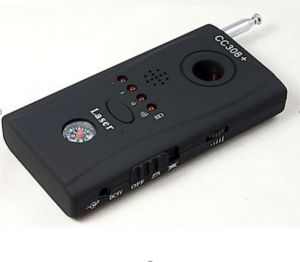
The user manual can help you quickly recognize each part of the car in order to identify suspicious equipment during the inspection.
It should be noted that unless you are very familiar with your car, do not disassemble any parts.
1 Signal scanning
The most common active trackers on the market now send real-time position signals at a certain frequency. Therefore, a wireless signal detector can capture this signal to find a hidden locator.
In order to avoid interference from other signals in the vicinity, the signal sources such as mobile phones, Bluetooth, and portable WIFI hot-spots should be turned off as much as possible before detection. It would be even better if the car could be driven to an empty parking lot.
Some locators will only send signals when the car is moving, but not when parking, so someone needs to cooperate with driving/checking.
Passive locators do not send wireless signals, so they cannot be detected with wireless signal detectors (described in the previous article).
If a suspicious signal that appears every fixed period of time (such as 10, 30, or 60 seconds) is identified, the target area is reduced according to the method we have taught in the anti-theft shooting course for subsequent physical inspection.
2 Outside inspection
After completing the suspicious signal scanning, you need to perform a physical inspection of the car from the outside with the help of a strong light flashlight, starting with the outside of the car.

3 In-car inspection
After completing the inspection outside the car, you need to move to the car for further inspection.
In the first step, check the seating area, including the seat headrest, seat cushion, back pocket, and carpet, which are movable, loosely located spaces.
In addition, some high-end models have heating devices in the seats. Pay attention to the comparison with the manual, and don't mistake it for a locator.
In the second step, check the instrument panel/pedal area. The circuit here is more complicated and is the ideal location for the locator to hide. Moreover, the locator can be connected to the automotive circuit here to achieve long-term work.
Checking this area requires the ability to remove the panel. First remove the glove box and the panel under the steering wheel, then check the wires that are not tied to other wires, and try to trace the source of suspicious equipment.
The third step is to check the storage area, including the sun visor, glove box, the area behind the rear seats and the trunk, etc. If these places are usually filled with debris by you, you need to be more careful when checking to avoid missing the locator.
The fourth step is to check the engine cover. Generally speaking, this high-temperature metal shell area is not suitable for placing locators, but it is not completely impossible, so just check it quickly.
After opening the engine cover, compare with the manual to see if there is any suspicious wiring on the battery, because the extra wiring may supply power to the GPS tracker.
For larger vehicles such as SUVs, you also need to check the unique positions of the roof tray and spare tire frame.

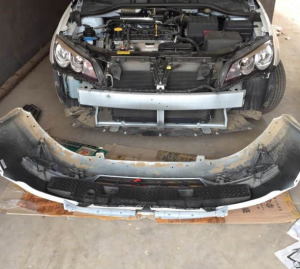
The locator can be fixed in various positions of the car through strong magnets or tape. The most common locator is a large magnetic box, which is the main target you are looking for. Of course, there are also smaller devices, which may be hidden in many unobtrusive places.
Since the metal will block the positioning signal transmitted by the satellite, the locator cannot confirm its position without receiving the signal, so the locator is generally not placed in a thick metal part. And plastic, glass, rubber and other materials have less signal blocking, which is easy to become a "bunker" for the locator.
The first step is to check the car chassis made of metal, which is the most common magnetic locator suction. If there is no car maintenance slot or lifting frame, you can lie down and check under the car. It is easier to install the locator on the edge of the chassis than the deeper chassis with thicker metal barrier.
If you see a strange object, you can try to pull it down by hand. If it is a magnetically attracted locator, it can be easily removed.
In the second step, check the wheel guard. This location usually does not have any external equipment, if the GPS tracker is installed, it can be easily seen.
For a more professional inspection, you also need to remove the tire to check the position behind. In this area, a normal wired sensor will be installed behind some brakes, do not mistake it as a GPS tracker.
The third step is to check the bumper. Inside the plastic front and rear bumpers is a common location for rapid deployment locators.
In addition, there may be equipment connected to the car's electrical system under the front bumper, so before removing any parts, be sure to compare the wiring with the manual.



4 Professional inspection
After the above steps, you have been able to remove almost all the locators deployed by ordinary people or "private detectives". If you still suspect that your whereabouts have been leaked, then you may have encountered insider.
For insiders, it is commonplace to install the locator in the brake light or sew into the leather seat. If you face such an expert, I believe you will also find a professional team to help you clear the GPS tracker.
5 About the shield
Maybe you have heard of signal blockers, but it is not a reliable car anti-tracking solution.
First of all, it can only shield a few fixed signal frequency bands. Without knowing whether the locator is GPS or BDS, or even the specific frequency bands, using a shielder is similar to buying a lottery ticket, and can be shielded even if it wins.
Secondly, if the power of the shield is too low, it is not enough to cover the entire car, especially the position of the body of the car such as the trunk and chassis.
Finally, the shield will also affect the normal operation of the mobile phone and navigation system in the car, which is very embarrassing.
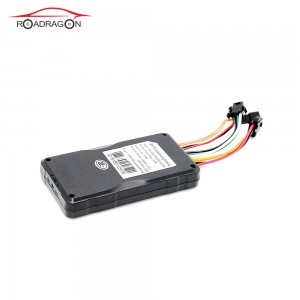
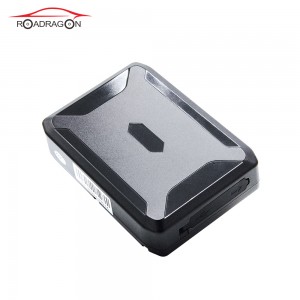
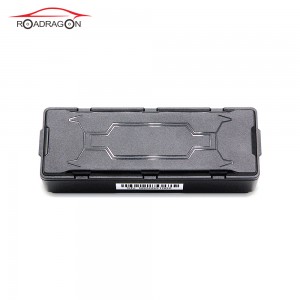
1. Ordinary GPS will send the current GPS location to the server every ten seconds to tens of seconds. This kind of GPS generally must be connected to electricity, because the power consumption is relatively large, but it is also the easiest to find, only to find a relatively empty, Hold a hand-held signal detector at a place where no one passes by 20 meters around, adjust the sensitivity to below 910, detect two frequency bands up and down 900 and up and down 910, from the inside to the outside of the car, every 20 cm interval, pause for 20 seconds, see Whether the signal can be detected, if the signals of these two frequency bands are found, then the signal strength is determined by moving, and when the signal is full, the GPS will be within 20 cm around the detector, and then the disassembly is searched. can. The 900 and 910 here correspond to the frequencies generated by the mobile and China Unicom GSM cards when sending GPS information, but need to be adjusted according to the local mobile and China Unicom base station frequency points. The up and down fluctuations are about 6 or less.
2. Light sleep GPS, that is, manually set to send out the GPS location every fixed time and every day, the goal is to prevent detection and save power (possibly battery), this type of GPS should be passed through a dedicated The device, in conjunction with the shield and the mold machine, locks the GSM card number in the GPS, and then activates through the device, that is, continuously sends text messages or calls to the number, so that the device is in a signal transmission state, and continuously transmits the frequency band 900~910 You can find the signal by holding the hand-held signal detector and detecting according to the No. 1 method.
3.Deep-sleep GPS, this type of GPS has an automatic switch function. When it does not send a signal, it will shut down by itself. No tool can detect its information. This is also the deepest hidden type of GPS, which is difficult to find. However, since it is GPS, the purpose is to transmit wireless signals to the outside. There are always times when the signal is turned on. At this time, we still use professional detection equipment to continuously scan through the frequency of every few minutes. Once the GPS is turned on, Sending a signal can be captured by the device for activation and detection. Generally, the transmission period of this type of GPS will not exceed 24 hours, and the transmission time is mostly at night. The reason is actually very simple. The installation of this type of GPS is just for Tracking the car has nothing to do with the driver. The car usually drives on the road during the day and will park in the parking lot at night. At this time, the short-term signal sent by the Deep Sleep GPS can lock the car's position, and the car's position will continue to move. I will not say what to do, everyone understands. +Of course, through the above three detections, some GPS may still not be detected. For example, some cars will only send a signal after the car is on. The car is turned off and the GPS is automatically turned off. How can you measure it? It can’t be measured for several years. There is also a transmission when the car is driving, and a shutdown when it is not driving.
To sum up, paying attention to privacy and safety is just like wearing a seat belt while driving. It is also a kind of safety awareness. It is best for car owners to seriously study today's locator inspection methods and regularly check their cars.
Post time: Jun-09-2020
